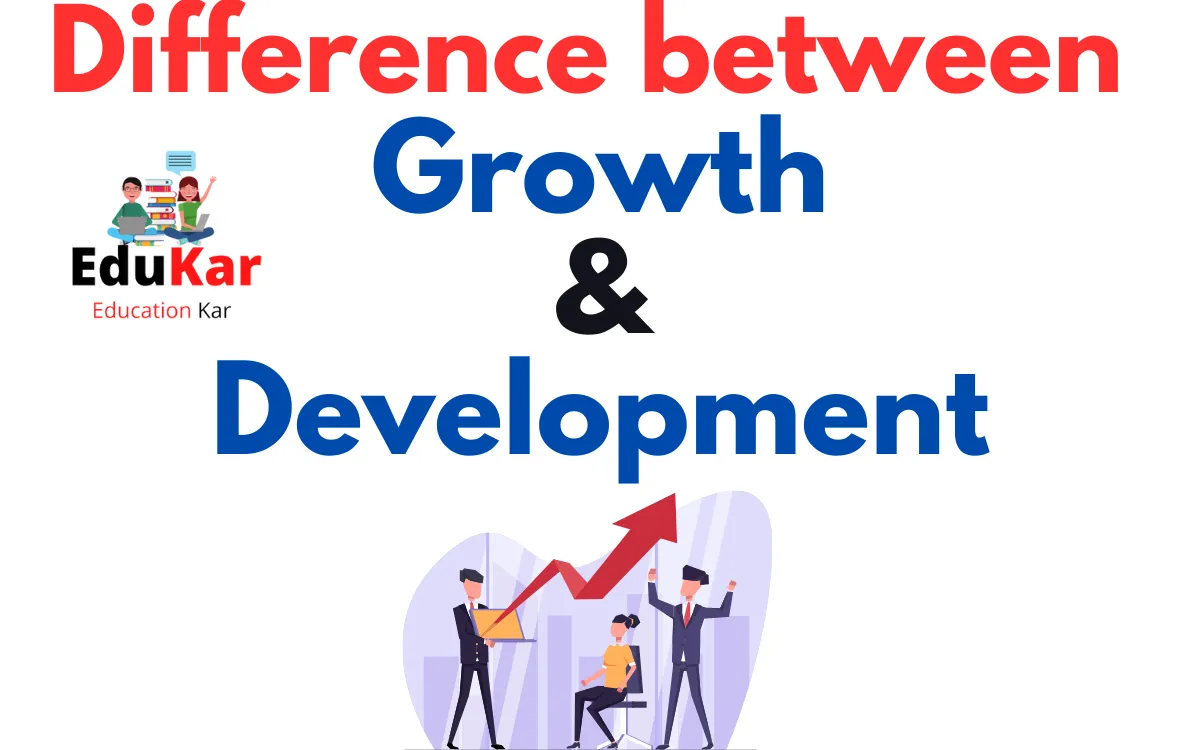Growth and development are two terms that are often used interchangeably, but they are actually two different concepts that are important to understand. Growth refers to physical changes, such as an increase in height or weight, while development refers to changes in abilities, behaviors, and functions. Understanding the difference between growth and development is important for parents, educators, healthcare providers, and policymakers.

In this blog post, we’ll explore the difference between growth and development, the factors that affect them, and why it’s important to understand their differences.
What is Growth?
Growth is a measurable increase in physical size or mass. In humans, growth is usually measured by height, weight, and other physical characteristics. Factors that affect growth include genetics, nutrition, environment, and disease. Animals also experience growth, and their growth can be measured by changes in body size or weight. For example, a puppy grows into a larger dog, while a caterpillar grows into a butterfly.
What is Development?
Development refers to changes in an organism’s abilities, behaviors, and functions. There are different types of development, including cognitive, social, emotional, and physical development. Cognitive development is the ability to think, learn, and understand the world around us. Social and emotional development is the ability to form relationships and regulate emotions. Physical development is the ability to control movements and perform activities. Factors that affect development include genetics, environment, experiences, and cultural influences.
Differences between Growth and Development
Here’s a comparison table highlighting the key differences between growth and development:
| Basis of Difference | Growth | Development |
|---|---|---|
| Definition | An increase in size or quantity, usually in a physical sense | A broader concept that refers to progress and improvement in multiple areas, including social, emotional, cognitive, and physical |
| Nature | Quantitative | Qualitative |
| Measure | Can be measured in terms of size, weight, or height | Not always quantifiable, but can be observed in behavior, attitude, and skill level |
| Process | Generally continuous | Can be both continuous and discontinuous |
| Focus | Usually on specific aspects such as weight, height, or number of cells | Broader and more holistic, focusing on multiple areas of development |
| Determinants | Influenced by genetic factors, nutrition, and environmental factors | Influenced by genetics, environment, and experiences |
| Scope | Usually limited to specific areas such as physical growth | Covers multiple domains such as physical, cognitive, emotional, and social development |
| Timing | Can occur rapidly in short periods, especially during early childhood | Usually a long-term process that takes place over a longer period |
| Outcome | May or may not lead to development | Generally leads to development, but not always |
| Example | An increase in height, weight, or the number of cells in the body | Improved cognitive abilities, emotional intelligence, or social skills |
Importance of Understanding the Differences
Understanding the differences between growth and development has important implications for parenting, education, healthcare, and public policy.
For example, parents can support their child’s growth by providing adequate nutrition and healthcare, but they can also support their child’s development by providing opportunities for learning, socialization, and emotional support.
Educators can support both growth and development by designing appropriate learning activities and providing social and emotional support for students.
Healthcare providers can monitor both growth and development to ensure healthy development and address any issues that arise.
Public policies can also support growth and development by providing access to healthcare, education, and other resources that promote healthy development.
Conclusion
Growth and development are two important concepts that are often used interchangeably but are actually different. Growth refers to measurable physical changes, while development refers to qualitative changes in abilities and behaviors. Understanding the differences between growth and development is important for parents, educators, healthcare providers, and policymakers. By supporting both growth and development, we can ensure healthy development and help individuals reach their full potential.
FAQs:
What is growth?
Growth refers to a measurable increase in physical size or mass. In humans, growth is usually measured by height, weight, and other physical characteristics. Animals also experience growth, and their growth can be measured by changes in body size or weight.
What is development?
Development refers to changes in an organism’s abilities, behaviors, and functions. There are different types of development, including cognitive, social, emotional, and physical development. Cognitive development is the ability to think, learn, and understand the world around us. Social and emotional development is the ability to form relationships and regulate emotions. Physical development is the ability to control movements and perform activities.
What is the difference between growth and development?
The main difference between growth and development is that growth refers to physical changes, while development refers to changes in abilities, behaviors, and functions. Growth is primarily physical, while development encompasses physical, cognitive, emotional, and social changes. Growth is often measured by specific physical indicators, while development is more difficult to measure objectively.
What factors affect growth and development?
Factors that affect growth and development include genetics, nutrition, environment, experiences, cultural influences, and disease. Some factors may have similar impacts on growth and development, such as genetics and environment, but they may have different effects on growth versus development.
Can growth and development occur independently of each other?
While growth and development are related, they can occur independently of each other. For example, an individual may experience physical growth without a corresponding increase in cognitive or emotional development, or an individual may experience cognitive development without a corresponding increase in physical growth. However, healthy growth and development often occur in tandem and can be mutually reinforcing.





